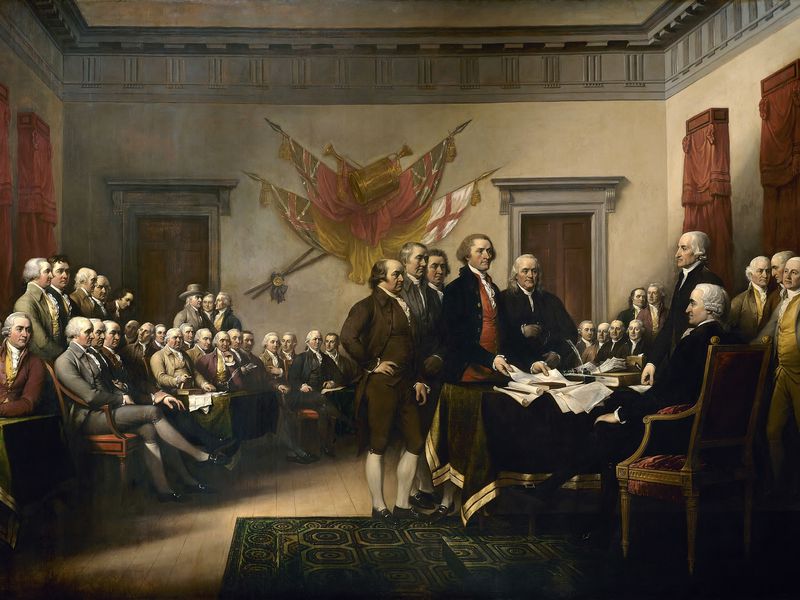The June 2017 issue of the Smithsonian VI P Newsletter has given me something new to think about for this 4th of July. In the “Ask Smithsonian” section was the following question —
P Newsletter has given me something new to think about for this 4th of July. In the “Ask Smithsonian” section was the following question —
Who was the intended audience for the Declaration of Independence?
The answer will probably surprise you.
The standard narrative of the Declaration of Independence goes something like this: Colonists could no longer tolerate the British government’s unjust laws or taxation without representation, so the Second Continental Congress voted to compose a document that explained the need for independence and justified the reasons for the revolt. Nothing could be further from the truth.
The colonists already had decided to break free from British rule. Emboldened by the battles at Lexington and Concord, colonial governments sent delegates to the Continental Congress with instructions to “immediately to cast off the British yoke.” But so far, the American nation had proven stunningly incapable of fending for itself, like a rebellious adolescent who takes leave of his family without a penny to his name. Soon after the Battle of Bunker Hill, Benjamin Franklin noted that “the Army had not five rounds of powder a man.” America needed allies—and it needed them soon.
Jefferson’s letter was an engraved invitation to France and Spain, asking them to go to war alongside the Americans. It was approved by the Second Continental Congress on July 4, a Thursday. By Monday, Congress had placed copies aboard a fast ship bound for France, with instructions to “immediately communicate the piece to the Court of France, and send copies of it to the [Court of Spain].” The message was clear: “We have staked everything on winning this war. Without a military alliance, there is no hope that we can continue. Now, please come to our aid.
And they did. Within a year, France signed treaties with the fledgling American nation that automatically put it at war with Britain. A year after that, Spain joined France in the fight, though it never formally allied with the United States. Together they turned a regional conflict into a world war that bled off British forces from America. Spain eventually wrested Florida from Britain and French troops fought shoulder to shoulder with Americans at Yorktown, effectively ending the conflict.
The Declaration of Independence therefore marks the United States as a nation that was created as part of an international alliance. And without the need to stake its success on two prospective allies, one of the United States’ most important founding documents would likely never have existed.
The complete article is “At Its Core, the Declaration of Independence Was a Plea for Help From Britain’s Enemies” by . It can be found here — http://www.smithsonianmag.com/history/its-core-declaration-independence-was-plea-help-britains-enemies-180963857/? . The photo is the painting “Declaration of Independence” by John Turnbull, and is from that website.
